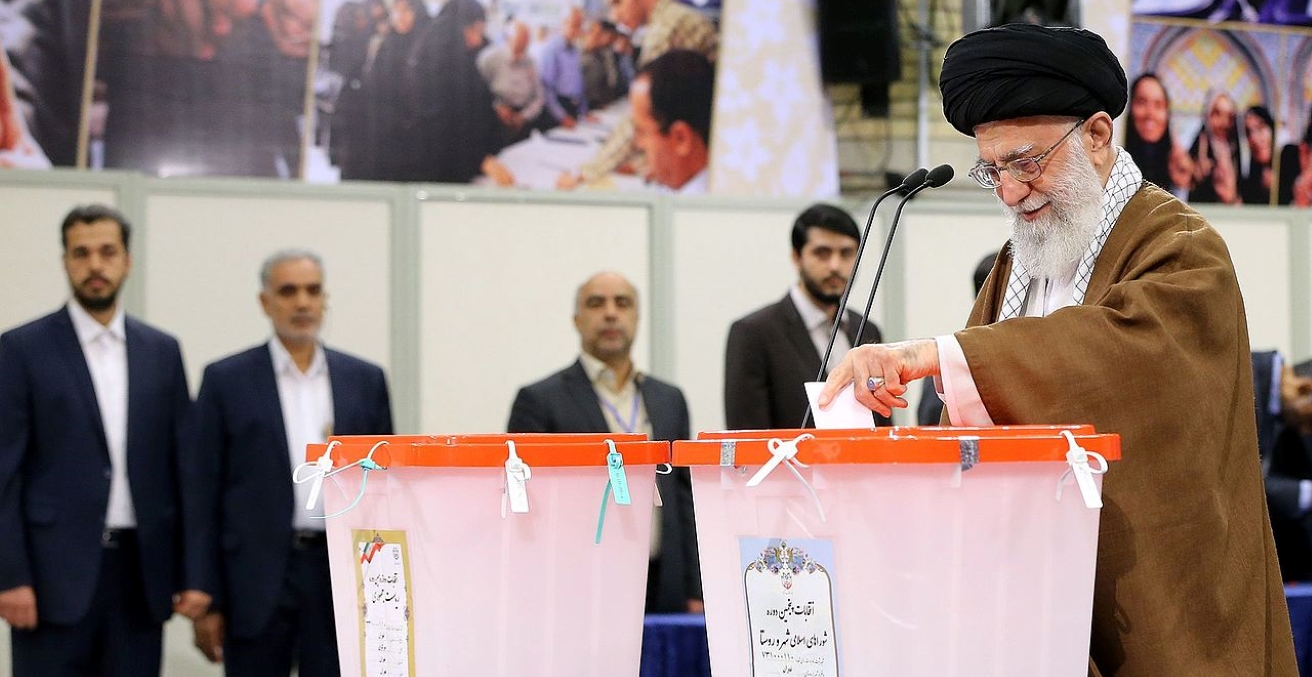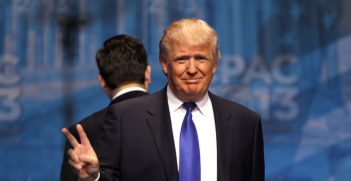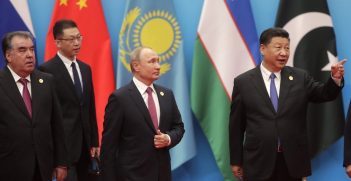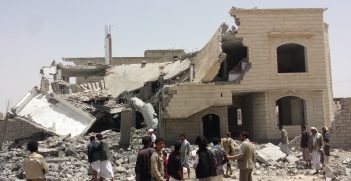Iran's Crisis Election

The Iranian regime is ensuring that conservatives and hardliners win big in Friday’s parliamentary elections. That will be a pointer to next year’s presidential election.
Iran’s legislative elections on February 21 will be held in an atmosphere of crisis.
The economy is still reeling from the Trump Administration’s withdrawal from the 2015 Iran nuclear agreement and subsequent imposition of a policy of “maximum pressure” in the form of stringent sanctions. That has caused Iran’s main source of income, oil exports, to drop from 3.2 million barrels per day (bd) in 2016 to around 500,000 bd now.
That in turn has produced a collapse in living standards, with the IMF estimating that Iran’s economy shrank by 9.5% in 2019. In November 2019 there were demonstrations across 100 cities in protest at the Rouhani government’s attempt to restore some budgetary equilibrium through price rises in government-subsidised staples.
Moreover, the clerical regime (essentially the Supreme Leader, Ali Khamenei, and those around him) is under external pressure. It has been unable to mount an effective response to the assassination of Iranian military commander Qasem Soleimani by the US in January. The retaliatory missile strikes on US bases in Iraq were tokenistic, producing no casualties. The regime clearly fears provoking Trump to further military action.
The military’s panicky shooting down of a Ukrainian airliner in January following the Soleimani killing brought more street protests, further underlining the Iranian public’s lack of trust in the regime.
With its confidence shaken, the regime is seeking to reassert domestic control by blatant manipulation of elections to the 290-seat Consultative Assembly (the unicameral legislature, or Majlis-e shoura).
Vetting of candidates
Under Iran’s constitution, the elections are overseen by a 12-person vetting body called the Guardian Council. Supreme Leader Khamenei directly appoints six of these positions, with the other six appointed members indirectly selected by him through the head of the judiciary, whom Khamenei appoints.
The Guardian Council’s primary role is to ensure that laws passed by the Majlis are in accordance with Islamic criteria. But in the run-up to legislative elections, the Guardian Council is also tasked with assessing candidates for their personal and Islamic probity. Candidates rejected by the Council cannot compete in the elections.
This ensures that the balance of power in the legislature is in line with the prevailing approach of the Supreme Leader and those around him. In essence, it’s a further layer of the checks and balances system in Iran’s constitution, allowing the Supreme Leader to put brakes on the behaviour of the President.
Legislative elections have been held every four years since 1980. In each of these, the Guardian Council has disqualified significant numbers of candidates on vague probity grounds. But in reality, candidates are disqualified because they’re not “on message” with the regime leadership.
This year, the Council has rejected more candidates than ever before – some 7,296 of the 14,444 applicants, including some 80 sitting members of the Majlis, who must have their qualifications rechecked by the Council before each election.
Factional groupings
Iran’s domestic politics are remarkably divisive, but the four broad factional groupings are Reformists, Centrists, Conservatives, and Hardliners. As an indication of the politics involved here, President Rouhani is generally regarded as a Centrist, and his predecessor, Mahmoud Ahmadinejad, as a Hardliner.
Essentially, the Council has rejected the overwhelming majority of candidates from the Reformist-Centrist groupings, meaning that the new Majlis will be dominated by Conservatives and Hardliners.
290 seats are to be filled, though the 7,148 candidates who were not disqualified will contest 285, as five are reserved for religious and ethnic minorities. Electorates vary between single- and multi-member constituencies. In some, the Council appears to be micromanaging the result: striking out Reformist or Centrist candidates whom it assesses could win, with the obvious intention of leaving a clear path for Conservatives and Hardliners.
Winning candidates must have received at least a quarter of votes cast. The initial results will be provisional, as there may well be run-off elections, held in May, in constituencies where leading candidates fail to garner 25 percent of the vote. Given the Council’s manipulation of the system, many of these could be between Conservatives and Hardliners. The number of candidates contesting each electorate is difficult to gauge, but one leading reformist has claimed that 160 of the 290 seats will see next to no competition.
In a rare display of defiance against the regime, President Rouhani (who is not in Khamenei’s inner circle) has publicly criticised the Council’s politically motivated vetting process. But he is also encouraging Iranians to vote.
Many more-liberal Iranians have already declared they won’t. Reformists have said they won’t field a slate of candidates in Tehran, a key constituency that elects 30 representatives. One poll has indicated that only 24 percent of voters will turn out in Tehran.
Moreover, there have been allegations of corruption in the process. One current member of the Majlis has claimed that middlemen demanded up to $300,000 in bribes from candidates in order to be passed by the Council.
Regime unperturbed
None of this outcry seems to worry the regime. Observers had forecast that Trump’s 2018 abrogation of the nuclear deal and reimposition of sanctions would benefit Iranian Conservatives and Hardliners. That is exactly what has happened.
Rouhani had staked a lot on hopes that the agreement would provide a pathway to Iran’s economic revival. That gamble has now failed.
Khamenei’s approach to Iran’s governance since he became Supreme Leader in 1989 has been to allow competing sides of the political spectrum alternate turns at managing the country. After the Reformist Mohammad Khatami, who was president from 1997 to 2005, Khamenei turned to Ahmadinejad from 2005 to 2013.
After giving Rouhani two terms in office, Khamenei is now clearly turning back to the Conservative-Hardliner side.
The regime’s main concern is a poor turnout nationwide, which would suggest low support for the system. If that happens, we may never know. The regime has massaged results to suit it in the past.
Why the elections matter
The Majlis elections are held in the year before the presidential election and are often harbingers of the presidential outcome. A strong Conservative showing in this election will almost certainly mean the election of a similarly minded president in 2021. It will also mean that Rouhani is a lame duck for the remainder of his term.
After the disastrous experiment with Ahmadinejad, who was unpopular and whose re-election in 2009 provoked street demonstrations, the next president is more likely to be a Conservative than a genuine Hardliner.
It’s too early to forecast who that might be. But observers are watching Ali Larijani, a prominent Conservative who has been Speaker of the Majlis since 2008 and has announced he is resigning from both the speakership and the legislature. At 62, still young by Iranian political standards and known to be trusted by Khamenei, he is thought to be positioning himself for a run at the presidency.
Another to watch is Mohammad Ghalibaf, a leading Conservative and a former mayor of Tehran. He is believed to be aiming at the Speaker’s role. At 58 and fiercely ambitious – he has unsuccessfully contested the presidency three times – Ghalibaf still has time for another tilt at the top job if he manages the speakership well.
Ian Parmeter worked for 37 years in the Department of Foreign Affairs and Trade, the Department of the Prime Minister and Cabinet, and the Office of National Assessments. He is currently a Research Scholar at the Centre for Arab and Islamic Studies, Australian National University.
This article is published under a Creative Commons Licence and may be republished with attribution.





